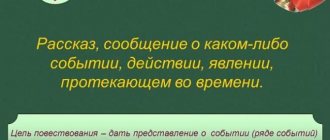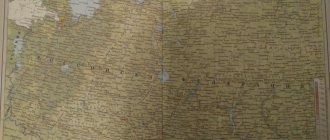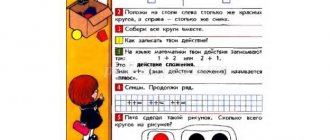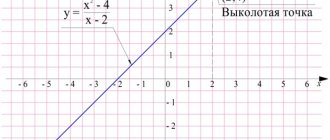Music lesson-concert (1st grade)
General lesson-concert on the topic: “Music around us.” 1st class
Preliminary work
Teacher:
- prepares tablets-words of aesthetic expressions of emotions according to the number of children (the tablets are on the desks), caps for the singing “Sound scale” (DO, RE, MI, FA, SOL, A, SI);
- gallery of the best drawings by students on the topics “Music around us”, “Music and you”;
- tables of musical instruments for playing: guitar, harp, accordion, balalaika;
- caps (DO, RE, MI, FA, SOL, A, SI) for the “Sound Scale” singing;
- signs with words of expressions of emotions;
Goals and objectives of the lesson:
Educational
- consolidate the ability to distinguish different types of music;
- learn to distinguish the sounds of musical instruments by ear;
- organize the process of analyzing familiar music;
- in the process of vocal and choral work, to develop cantilena performance skills;
- teach children to sing in an ensemble with friends, with soloists, to the accompaniment of a teacher.
Developmental
- develop musical perception skills by enriching them with different intonations;
- in the process of listening to music, develop timbre hearing;
- develop the ability to analyze, compare, generalize;
- in the process of vocal and choral work, develop students’ singing skills;
- develop children's creative abilities;
- develop children's creative initiative and independence.
Educational
- on the basis of the emotional perception of song creativity and music by D.B. Kabalevsky, to cultivate a love of music and the need for communication with art;
- instill love for the Motherland, for Russian nature;
- form positive habits;
- cultivate a friendly attitude towards comrades;
- enrich the spiritual world of children.
During the classes
First graders enter to the song.
Leading
. Guys, our first school year has ended. I want it to end as a holiday and be remembered throughout the summer holidays.
Listen to the birds chirping, Listen to the wave singing, Listen to the rain knocking on your window - MUSIC IS HEARD EVERYWHERE
When you came to your music lesson for the first time a year ago, one of the Muses, a sorceress, a good fairy, revealed to us the wonderful world of sounds that fill everything around us. She taught us to listen and hear the music that sounds in the human soul and nature. Guys, what time of year was it when the perky bells invited you to school?
Children.
Autumn.
Presenter.
…The grass is already turning yellow in the field, the leaves are falling dry, soon the chirping birds will fly away to foreign lands!..
A. Pleshcheev
Performing the song “drip-drip”
.Children sing and show with smooth hand movements the falling of leaves and the flight of birds.
Leading.
What autumn month do you think this song belongs to?
Children.
The month of October.
Presenter.
Why?
Children.
Because in September the leaves are just beginning to change color, in October the leaves fall, and in November frosts are already setting in.
Presenter.
Right. After the first frosts in November, real winter comes.
Reader 1.
White fluff, snow fluff - Everything, everything, everything is fluff around. Pooh on hats, Pooh on fur coats, Pooh on eyebrows, Pooh on lips. How ticklish, wow! Who's tickling? - Pooh!
Nature rests in winter: trees sleep, insects and many animals also hibernate. Do you and I know “Why does a bear sleep in winter?”
Perform this song while pretending to be the characters. In what mood should you sing each phrase of the song?
Children choose the necessary tablets - words of aesthetic expressions of emotions that are placed on the board. Performance and dramatization of the song “Why does the bear sleep in winter?”
Leading.
Spring always replaces winter:
The azure of the sky is pure, the sun has become warmer and brighter, the time of evil blizzards and storms has passed again for a long time.
A. Pleshcheev
You started school in the fall and finished first grade in the spring. During this school year you have made many friends, learned to read and count. Sometime in September we began to learn the alphabet. Guys, who created the first Slavic alphabet?
Children.
The first Slavic alphabet was created a thousand years ago by the brothers Cyril and Methodius.
Leading.
Right. Then each letter had its own meaning. For example, the letters A B C were read: az beeches, which means: I know the letters. Do you know the letters well?
Children.
Yes.
Performance of the song “Alphabet”
Leading.
A! Let's go through the alphabet together. B! Let's sing it like a song. IN! We'll sing it merrily! G! Louder than thunder, louder than thunder. D! Today is a musical day. E! We have vocal talent. AND! Living without knowledge would be boring, Z! Knowledge is our power!
Leading.
Music also has its own musical letters, which are called NOTES.
There are seven of them in total. DO, RE, MI, FA, SOL, LA, SI. Children in caps come to the board and build a scale.
Leading.
These notes all form a sound scale.
Performing the song “Sound scale” from “DO”, “RE”, “SI”... Each time the children in caps line up in a new way.
Reader 2.
To learn to sing, We have patience, And so that our lesson is not in vain, We must be diligent, Obedient and attentive, And learn all the notes well!
Performance of the song “Note Round Dance”
Leading.
You and I also learned about many musical instruments and listened to how they sound. Each musical instrument, like any human voice, has its own sound, its own TIMBREA. Listen to the fragments. What musical instruments will you hear in them?
The game “Guess the musical instrument” is played.
(cards + music instruments)
rhythm
Leading.
Well done. We completed all the tasks. Is it easy to become a music artist? Let's try to find out in our song.
Performance of the song “Everyone has their own musical instrument”,
showing playing instruments.
Leading.
Listen to the poem.
Quiet, quiet, very quiet We will walk around the room. It's quiet, quiet on the sofa, we'll sit down together. Let's sit with you quietly. Maybe an hour, maybe two. We will speak quietly, very quiet words. Outside the window, quietly, quietly, Maple rustles about something. Everywhere is quiet, quiet, quiet, Because mom is sleeping.
V. Orlov
What musical instrument could decorate this poem? ( show several instrument cards)
Children.
Violin, flute, piano, guitar.
Leading.
What kind of music can accompany these words?
Choose the right words - emotion boards that are placed on the board.
Leading.
Perform this song with the character you have chosen.
Performing the song “Lullaby for Mom”
Presenter.
The words MOTHER and MOTHERLAND are the closest and warmest for every person. Composers, artists, writers and poets talk in their works about the Motherland, about the beauty of their native nature.
Reader 3.
If they say the word “homeland,” the old house immediately comes to mind, currants in the garden, a thick poplar at the gate. By the river there is a modest birch tree And a daisy hill... And others will probably remember their native Moscow yard... Or the steppe red with poppies, Golden virgin lands... The homeland is different, But everyone has the same one!
Z. Alexandrova
Presenter.
Say the words “Good morning!” with different intonation.
A game
:
Affirmative, Surprised, Admiring, Cunning, Evil, Dreamy, Sad, Joyful
Presenter.
Guys, in what mood should you sing songs about your region?
What feelings do you get when you sing about the Fatherland?
Children.
Kind, gentle, affectionate, with love...
Performing the song “Good Day”
Presenter.
I would like to congratulate you guys on the successful completion of the first grade, wish you success in the second grade, hard work, diligence. It was a pleasure to work with you. I look forward to seeing you in September.
The world of music is now always with you.
Our work together was not in vain. He calls: rejoice and sing - There are many melodies, they are all beautiful! The song is fun to walk through the open spaces together.






